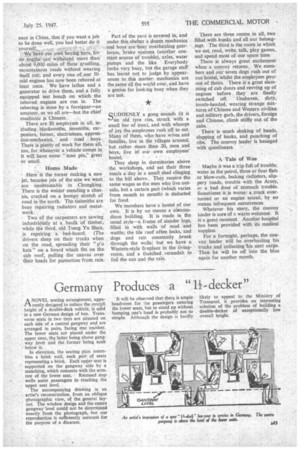Germany
Page 53

If you've noticed an error in this article please click here to report it so we can fix it.
Produces a "1-i-decker" ANOVEL seating arrangement, apparently designed to reduce the overall height of a double-deck vehicle, is uszcl in a new German design of bus. Transverse seats in two tiers are situated on each side of a central gangway and are arranged in pairs, facing one another. The lower seats are placed under the upper ones, the latter being above gangway level and the former being sunk below it.
In elevation, the seating plan resembles a brick wall, each pair of seats representing a brick. Each upper seat is supported on the gangway side by a stanchion, which connects with the armrest of the lower seat. Recessed step wells assist passengers in reaching the upper seat level.
The accompanying drawing is an artist's reconstruction, from an oblique photographic view, of the general layout. The window design and the centre gangway level could not be determined exactly from the photograph, but our reproduction is sufficiently accurate for the purpose of a diagram. It will be observed that there is ample headroom for the passengers entering the lower seats, but to stand up without bumping one's head is probably not so simple. Although the design is hardly likely to appeal to the Ministry of Transport, it provides an interesting solution of the problem of building a double-decker of exceptionally low overall height.












































































